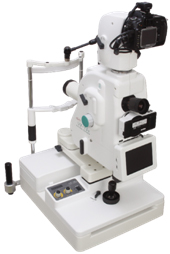
The transforming growth factor-β (TGFβ) signaling pathway is an important intracellular mechanism that promotes fibrosis. Our findings offer a potentially novel combination approach to concurrently managing subretinal neovascularization and fibrosis in nAMD. Luminex cytokine assays indicated that intravitreal anti–VEGF-A and anti-endoglin treatment, either alone or in combination, reduced the production of I元3 and macrophage inflammatory protein-3α. Immunostaining of retinal wholemounts with antibodies against glial fibrillary acidic protein and ionized calcium binding adaptor molecule 1 indicated that the combination therapy also effectively prevented subretinal fibrosis and inhibited microglial activation. Fluorescein angiography and measurements of retinal vascular permeability indicated that intravitreal anti–VEGF-A in combination with anti-endoglin treatment more efficiently inhibited vascular leak compared with either monotherapy. Endoglin was strongly expressed in subretinal fibroneovascular tissue. Müller cell disruption increased expression of TGFβ1, TGFβ type 1 receptor, and phosphorylated-Smad3. We conducted Western blots and immunohistochemistry to study changes in transforming growth factor-β (TGFβ) signaling including endoglin, a coreceptor essential for TGFβ signaling, and then tested the effects of monthly intravitreal injection of anti–VEGF-A and anti-endoglin, either alone or in combination, on the development of subretinal fibroneovascularization in our transgenic mice.

We generated transgenic mice in which induced disruption of Müller cells leads to subretinal neovascularization, which is reliably accompanied by subretinal fibrosis. This study aimed to identify a combination therapy to concurrently inhibit subretinal neovascularization and prevent fibrosis. Anti-VEGF therapy effectively inhibits vascular leak and neovascularization but has little effect on fibrosis. Subretinal fibroneovascularization is one of the most common causes of vision loss in neovascular AMD (nAMD).


 0 kommentar(er)
0 kommentar(er)
